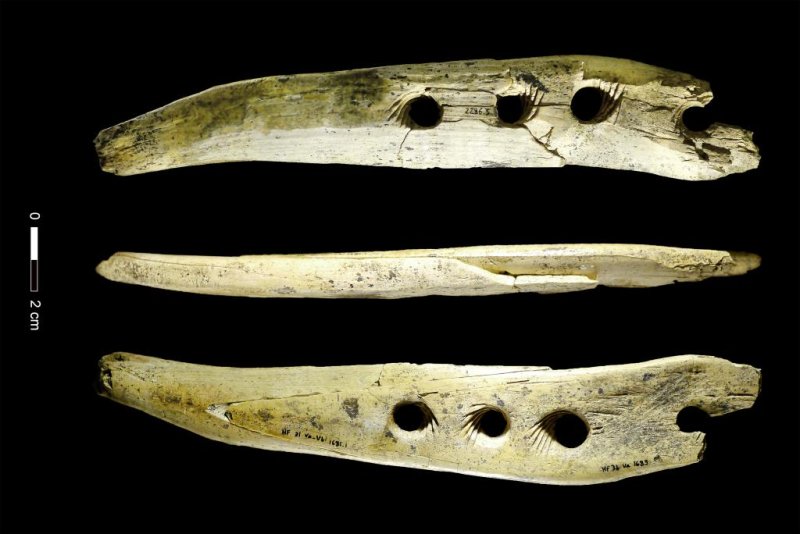1 of 2 | New research suggests intricately carved ivory tools recovered from a cave in Germany were used to make rope 40,000 years ago. Photo by University of Tübingen
TüBINGEN, Germany, July 22 (UPI) -- Despite its technological importance to early hunter-gatherers, archaeologists know relatively little about the production and use of rope and twine during the Paleolithic Era.
Artifacts recently unearthed in Germany suggest some early humans used specialized ivory tools to make rope.
Researchers from the University of Tübingen and the University of Liège recovered a neatly preserved piece of mammoth ivory with intricate carvings. Researchers determined the tool was made 40,000 years ago, around the time the first humans arrived in Europe. Analysis of the ivory suggests the carved notches weren't simply for decoration but were for the explicit purpose of weaving plant fibers into rope.
Scientists came to their conclusion after rigorous testing. Rope-making best explains the ivory's technological features, researchers argue in a new paper on the discovery -- published this week in the German-language journal Archäologische Ausgrabungen Baden-Württemberg.
It's not the first time researchers have uncovered carved ivory among Paleolithic artifacts. Scientists have previously suggested similar ivory tools were used as shaft-straighteners. Others argued the carved ivory were pieces of art or musical instruments.
The newly recovered ivory was better preserved than previous ivory artifacts, allowing scientists to more accurately test its utility for various tasks.
"This tool answers the question of how rope was made in the Paleolithic, a question that has puzzled scientists for decades," Veerle Rots, a paleontologist from Liège, said in a news release.















